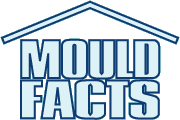How to identify types of mold in your house
Wouldn’t You Like To Know if Mold in Your House is Making People You Love Sick?
With all the news about black mold and its effects on your health, you may be a little worried if you see mold in your house, especially if you think it looks like black mold. You may already know that some types of mold are toxic and can cause health problems, while others do not affect your health, and are only a cosmetic problem.
Traditional thinking was not to bother identifying the type of mold inside a house, and to simply remove it with bleach and water, which will kill the surface of the mold, but may not kill the mold inside the material it's growing on. Also, mold spores, whether dead or alive can still cause allergy to sensitized individuals.
And, did you know that if you remove toxic mold incorrectly, you can put your health at even further risk? Removing toxic mold without proper protection exposes you to toxic spores released into the air when mold is disturbed.
Unfortunately, you can’t identify what type of mold is in your house by looking at a picture. Even someone specialized in mold identification cannot identify types of house mold by pictures of growth on a wall alone.
If you have visible mold in your house, don’t panic!
A Simple, Inexpensive Lab Test Using an Ordinary Household Item Can Provide You With Peace of Mind.
We’re a private laboratory specializing in identifying mold and we’ve identified literally thousands of house mold samples.

What you do is send us samples of visible mold growing in your house using ordinary clear scotch tape! It’s inexpensive and as effective as any mold identification kit you can buy online for over $10 US, in addition to the cost of sending the sample to a laboratory for testing. Caution! Please do not collect samples until you’ve read instructions on how to safely collect mold samples outlined on our order form.
What we do is examine your mold samples directly under the microscope, and within a few days, we’ll send you a report that will:
- Identify the types of mold in your house
- Tell you whether it’s toxic or harmless
- Direct you to the right resources or professionals to have the mold removed safely.
Don't Delay. Left Alone, Mold Continues to Grow. Send us your samples today!
Make sure you know what type of mold is in your home. Make sure you know whether it's hazardous to your health or not, and make sure you know exactly how to remove it. It's easy, it's affordable and it will give you peace of mind.
Download our easy-to-use order form today. It includes information you need to send together with the samples. Should you have any question, please feel free to contact the lab directly at (905)290-9101!
Labels: types of mold



0 Comments:
Post a Comment
<< Home